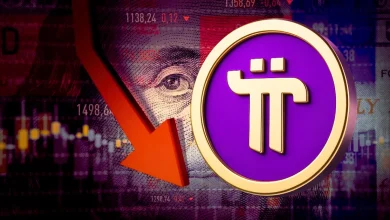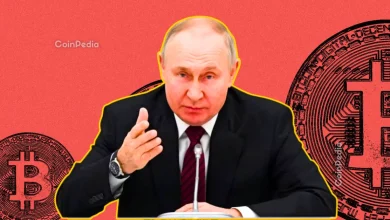FDIC Blockchain Policy: Why the US Is Preparing for Tokenized Deposits and Regulated Stablecoins

FDIC explores blockchain future: Acting Chair Travis Hill outlines plans for insured tokenized deposits and a new stablecoin application system coming by 2025.
Regulated tokenization ahead: With $24B in real-world assets on-chain, the FDIC moves toward clearer rules for bank-issued stablecoins and blockchain-based deposits.
The US Federal Deposit Insurance Corporation is preparing to take a more active role in the future of blockchain technology. Acting Chair Travis Hill recently revealed that the agency is evaluating how deposit insurance could function in a tokenized format, while also developing a structured pathway for stablecoin issuers. His remarks at the Philadelphia Fed’s Fintech Conference highlight a growing acceptance of digital-asset innovation within traditional banking.
Tokenized Deposits Enter the Conversation
Hill emphasized that a deposit should retain the same value and protections whether it sits in a traditional bank account or is moved onto a blockchain. This principle supports a future in which banks can adopt distributed-ledger technology without compromising customer security. The FDIC’s upcoming guidance is expected to clarify how insured tokenized deposits will work and how they fit into existing regulatory frameworks.
This push comes as blockchain tokenization gains momentum across global finance. According to a RedStone report, real-world assets on blockchain networks surpassed twenty-four billion dollars in value during the first half of the year — excluding stablecoins. Everything from private credit to short-term government debt is being explored in tokenized form. BlackRock’s launch of the BUIDL tokenized money market fund in 2024 underscores how quickly major institutions are adopting this shift.
- Also Read :
- U.S. Government Reopens, Crypto Braces for Liquidity Surge and FED Rate Cut Uncertainty
- ,
Plans for a Stablecoin Application System
Hill also confirmed that the FDIC is developing a formal application process for banks that want to issue stablecoins. The agency expects to publish a proposal for this system by the end of 2025. While it remains unclear how many banks will participate, the FDIC is already mapping out standards for reserves, capital requirements, and risk controls.
Stablecoins continue to be one of the fastest-growing sectors in digital finance. Their total market value has now reached roughly three hundred billion dollars, according to DefiLlama. With banks worldwide experimenting with stablecoin technology, US regulators are under pressure to introduce clear stablecoin regulations that balance innovation with consumer protection.
Is the Market Ready for Clearer Policies?
Hill’s remarks make it clear that the FDIC is preparing to provide structure to an industry expanding at record pace. Properly regulated tokenized deposits and bank-issued stablecoins could soon become standard tools in the financial system. As interest grows, the FDIC’s efforts signal that the US is moving closer to a comprehensive FDIC blockchain policy that blends traditional finance with modern blockchain infrastructure more smoothly and safely.
Never Miss a Beat in the Crypto World!
Stay ahead with breaking news, expert analysis, and real-time updates on the latest trends in Bitcoin, altcoins, DeFi, NFTs, and more.
FAQs
Tokenized deposits are blockchain versions of traditional bank deposits, offering the same FDIC insurance protection and value while enabling faster, more flexible transactions.
FDIC insurance applies to tokenized deposits just like regular bank accounts, protecting your funds up to $250,000 per depositor, even when using blockchain technology.
Yes, US banks can work towards issuing stablecoins. The FDIC is creating a formal application process, expected by 2025, with clear standards for reserves and risk controls.
The FDIC is developing policies for bank-issued stablecoins and tokenized deposits, ensuring customer protections and financial stability as blockchain technology integrates into banking.
Trust with CoinPedia:
CoinPedia has been delivering accurate and timely cryptocurrency and blockchain updates since 2017. All content is created by our expert panel of analysts and journalists, following strict Editorial Guidelines based on E-E-A-T (Experience, Expertise, Authoritativeness, Trustworthiness). Every article is fact-checked against reputable sources to ensure accuracy, transparency, and reliability. Our review policy guarantees unbiased evaluations when recommending exchanges, platforms, or tools. We strive to provide timely updates about everything crypto & blockchain, right from startups to industry majors.
Investment Disclaimer:
All opinions and insights shared represent the author's own views on current market conditions. Please do your own research before making investment decisions. Neither the writer nor the publication assumes responsibility for your financial choices.
Sponsored and Advertisements:
Sponsored content and affiliate links may appear on our site. Advertisements are marked clearly, and our editorial content remains entirely independent from our ad partners.








